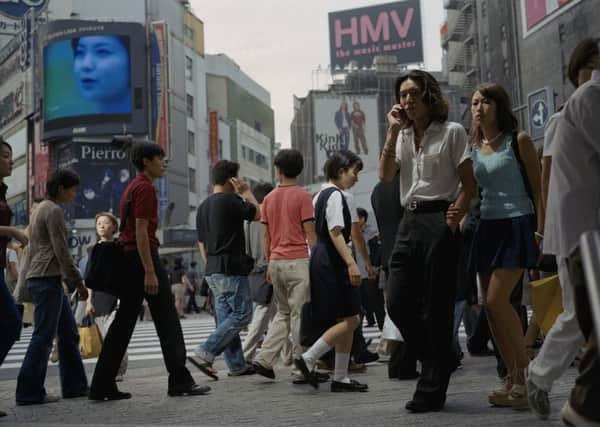Arts Preview: Philip-Lorca Di Corcia, The Hepworth Wakefield to June 1


Opening at the gallery today is the first UK showing of a large-scale survey of the work of Philip-Lorca DiCorcia one of America’s most important and influential contemporary photographers. The exhibition covers four decades of his work – from 1975 to 2012 – with over 100 photographs from several series including early work from A Storybook Life right up to his most recent ongoing project East of Eden, begun in 2008.
DiCorcia’s striking images – quintessentially American in flavour and with a strong filmic quality – are known for their deliberate blurring of the line between what is real and not real, exploring the relationship between the staged and the documentary. “They are extraordinary,” says Sam Lackey, curator at The Hepworth. “Some of the most amazing ones are those that seem quite ordinary at first. There is one in the A Storybook Life series of a man opening a refrigerator and it’s a very banal image but then as you keep looking at it you notice there is a weird light that is coming out of the units, so there is something quite unsettling about it.”
Advertisement
Hide AdAdvertisement
Hide AdSimon Wallis, director of The Hepworth Wakefield, says that in developing the gallery’s already broad programme, he was keen to include photography and wanted a show that was “accessible but psychologically fascinating”. He has long been an admirer of DiCorcia. “What I respond to in the work is the idea that it goes beyond merely a documentary photograph,” he says. “There is a sense of isolation yet you don’t feel alienated from the work.”
DiCorcia explains that the documentary part of his work derived from his desire to create art that had more than simply “an ascribed value” adding that “one of the reasons I had gone into photography was that I needed to get out of the house. I have never been someone who could go to a studio and face a blank canvas.” An enormous amount of planning and preparation goes into creating the settings in which he places his subjects. “Part of the point of those scenarios is that I have to be there too – I have to deal with the people and the dynamics and the logistics – it’s a puzzle, a personal challenge. It’s part of why I work.”
Sometimes, as in the series Streetwork (1993-1999), images of people on the streets of New York, the work is less staged. “There was a kind of mise en scène that was established before the picture was taken,” says DiCorcia. “I had lights attached to various things and I kind of pretty much knew what it was going to look like except for the people. Then I would just wait.”
One of the most affecting series of pictures is Hustlers (1990-1992) which features male prostitutes photographed in various locations around Los Angeles. This was a very personal project for DiCorcia partly inspired by bereavement. “It was during a period of great conservatism in the US and also at the peak of the AIDS epidemic,” he says. “There was a lot of animosity towards gay men and my brother was gay and had died of AIDS so that’s probably what led me to do it.” Looking at the images the vulnerability of the young men is palpable and that sense is heightened by DiCorcia’s decision to include underneath each photograph the subject’s name, age, hometown and the amount he would normally charge for his services. DiCorcia mentions Walker Evans, Robert Frank, Garry Winogrand and Diane Arbus as documentary photographers whose work he admires, although he adds
Advertisement
Hide AdAdvertisement
Hide Ad“I like a lot of photographers but I don’t like everything they do” and says that he hasn’t been influenced by anyone in particular. been influenced by anyone in particular. “I don’t think I could pick a desert island list and I’m probably deeply conservative – I like Edward Hopper, who doesn’t? – and Velazquez is my favourite painter.” Of his own work and methodology DiCorcia says: “I am very conscious of taking an image and that does take some of the spontaneity out of it. Where the spontaneity comes back in is that I always leave room for luck – the random occurrence that you can’t make happen. There is always an element of chance.”